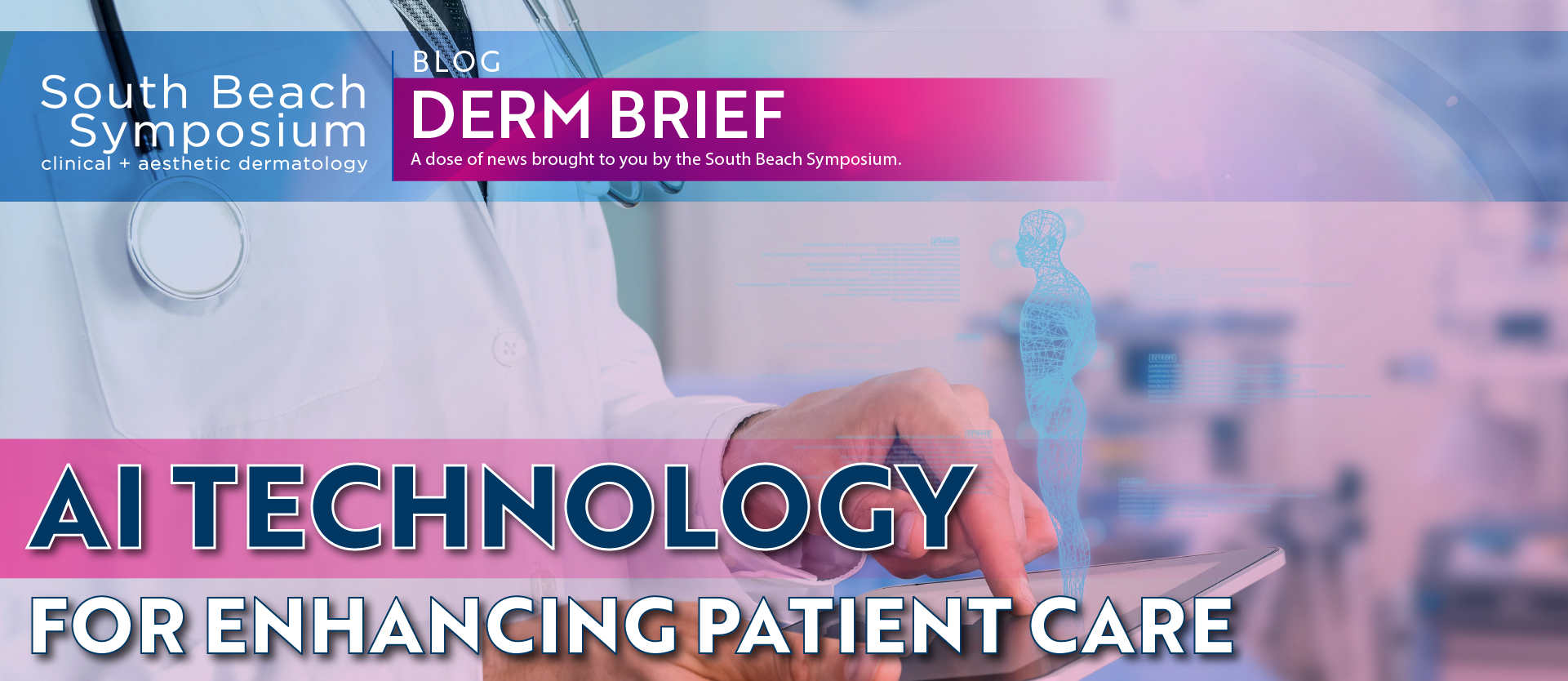With the use of artificial intelligence technology in medical specialties on the rise, there is an increased concern among clinicians about the potential practice and patient-related repercussions. While the implementation of machine learning, AI, and augmented intelligence in every day clinical practice remains a future possibility, the expected AI revolution is imminent and it is important for doctors to familiarize themselves with the technology. Rather than being a “man versus the machine” dilemma, this can instead prove to be an opportunity to transform clinical practice by augmenting it with AI technology.
The use of large image data sets to train software algorithms isn’t new, however, it is rapidly evolving in dermatology and other visual specialties. For some time, artificial intelligence along with machine learning have been used in dermatology to diagnose and manage benign skin conditions. As most dermatological data is image-based, an algorithm can be trained to recognize specified features of data set images and deduce a diagnosis. Although often conflated, artificial intelligence, machine learning, and augmented intelligence are three distinct technologies in the field.
Artificial Intelligence Versus Machine Learning
Artificial intelligence refers to a large group of image-based data that guides a computer or network in making decisions. Machine learning, on the other hand, is a subset of AI in which large computational networks learn and improve through trial and error. If an algorithm incorrectly recognizes an image it will take feedback and correct itself. Networks and machine learning programs can be trained to identify nuances and overlook variability between images focusing on true diagnostic features – making them a powerful tool for diagnosis of nevi, melanoma, skin cancers, and other dermatological conditions.
Augmented Intelligence
Augmented intelligence is an alternative conceptualization which leverages different AI components to advance human intelligence and capabilities. These technologies have the potential to enhance dermatology and other clinical practices, complementing in-person decision making rather than replacing doctors as a whole.
Thus far, applications of AI in dermatology have proven successful. Use of the convolutional neural network (CNN) – a class of deep learning neural network – to more accurately diagnose melanoma and less frequently misdiagnose benign moles was found to be at least as effective as dermatologists. In a 2018 study reported by European Society for Medical Oncology (ESMO), the method demonstrated greater sensitivity and specificity than 58 international dermatologists. The CNN identified 95% of melanomas from a sample of 100 images whereas dermatologists identified 86.6%.
Throughout the training process the CNN converts an image into a series of numbers while retaining visual information. This is reiterated until the CNN is able to compare any new image with a visually similar one from its pre-existing library that captures the same pathology. The ability of an AI algorithm is directly linked to the amount of data it has available; the more data and training provided, the more accurate a system will be and more likely to pick up crucial nuances.
Another example of AI evolution is the widespread use of teledermatology which allows medical data transmission between patient and doctor without an in-person visit. Companies such as First Derm produce applications that individuals can use to take pictures of their suspected conditions and share them with a board-certified dermatologist. Data is reviewed by both the system and the dermatologist, who can then diagnose and present treatment options as well as decide whether an in-person visit is necessary.
Causes For Concern
The application of AI in dermatology is not infallible. Unlike artificial intelligence technologies, dermatologists are able to evaluate a host of factors along with the presentation of the condition. Taking into account not just the symptom itself, doctors analyze other areas of the body, progression of the condition, skin type, cancer history, and other risk factors to ensure a comprehensive understanding of symptoms before determining a diagnosis. AI technology’s inability to differentiate cause in visually similar conditions may prove to be a significant issue.
Another potential problem facing the implementation of AI in dermatology is a lack of access to medical data. Patient consent is needed to access medical data sets necessary for machine training purposes, which can be difficult to attain at a large enough scale. Additionally, data quality needs to be taken into consideration. Clinical image data sets – which are the basis of machine learning – are primarily taken under controlled conditions with a dermascope. A comparison of clinical data to images taken with mobile phones under poor lighting may lead to misdiagnoses.
In order to ensure patients receive the best possible care, dermatologists need to be involved in the shaping of AI technology from its earliest stages. A sufficient amount of accurate data needs to be supplied for the development of an infallible machine with robust diagnostic capabilities.
Trial-based data implicates the use of AI technology can be expected to grow steadily although, these novel methods will need more than proven efficacy to become implemented into modern medicine practices. Technology may be increasingly prevalent in the dermatological setting however, it is not taking over. Instead, the implementation of AI is expected to support dermatologists and enhance their clinical practice, resulting in greater diagnostic capabilities and optimized patient outcomes.
















